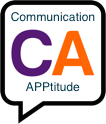Storytelling is ultimately a creative act of pattern recognition. Through characters, plot and setting, a writer creates places where previously invisible truths become visible. Or the storyteller posits a series of dots that the reader can connect. - Douglas Coupland
In our "Storytelling and Language-Learning Differences" post, we discussed the "recipe" or pattern
for telling a story:
Usual events + Unusual events + Problem(s)
+ Solution(s) + Ending = Narrative
With all new skills learned, there has to be a time of
practice that allows the student to perfect their technique and adapt it to a
variety of narratives. Take the pattern for storytelling and
have some fun with it.
Toys and Pictures
One way to
practice other than just creating stories aloud, is to use toys such as Legos
or Polly Pockets (really any figurines) and create a scene from each part of the
story. Using an iPad or camera to either take pictures of
the story is fun. Print them out or send them to the students' parents so they can practice telling the story at home.
Create Books
There's no better reward for a student who created a story
than to see it in print. Books can be low tech with craft supplies and paper or
high tech using a tablet or computer. Check out teachthought.com's website for
apps that let student's create their stories on iPads (http://teachthought.com/apps-2/15-literacy-apps-to-create-books-on-the-ipad/).
Videos
Videos are my new favorite way students can practice their
narrative skills. iMovie on the iPad is a great way to make a video and if you
don't know how to do it, your students can most likely show you. My new
favorite app is Toontastic. Try it for free with Toontastic Jr. - I used their
pirate app. We quickly graduated to Toontastic where you can buy unlimited
settings, characters, etc. for $9.99. Students are pattern of storytelling and use each step to create their movie with moveable
cartoon characters, lots of settings (backgrounds) and music. I sit with my
student while they make decisions and guide them in creating their story. I write
while they dictate and then one of us reads the story after making each section
of the movie. They can add credits and a title. Upload the movie to YouTube*
and their family can watch it at home. Many of my students have been using
Toontastic at home honing their narrative skills. Check out one of my students'
creations:
*If you have a gmail account, you have a YouTube account.
If you don't have a gmail account, it's easy to sign up with Google.


No comments:
Post a Comment